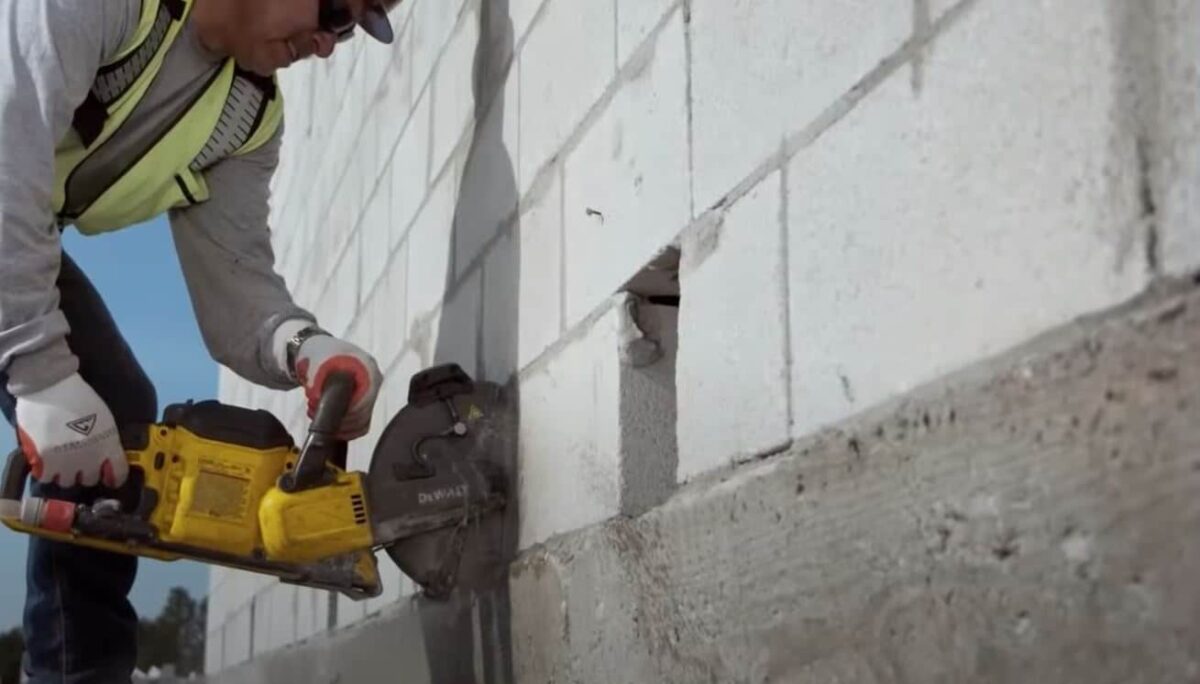The Basics of Concrete Cutting Safety
Concrete cutting, coring, and drilling are common processes in Auckland’s rapidly developing landscape, from Ponsonby’s residential projects to Albany‘s commercial developments. These tasks, while essential, come with their set of hazards. Therefore, understanding the safety gear involved is not just a good practice; it’s a necessity.
Primary Protective Gear for Concrete Cutting
Diving into the technicalities of the job, a series of safety gears emerge as non-negotiables:
- Safety Goggles: To protect the eyes from flying debris.
- Dust Masks: Inhalation of concrete dust can lead to severe respiratory problems.
- Ear Protection: Cutting machinery can be extremely loud, risking hearing damage.
- Gloves: High-quality, cut-resistant gloves protect against abrasions.
- Safety Boots: Steel-toed boots prevent foot injuries from falling concrete or equipment.
- High-Visibility Clothing: Ensures workers are easily seen, reducing accident risks on busy sites.
Risks and Health Considerations in Concrete Coring
Concrete coring, specifically, can be deceptive. While it might appear less aggressive than full-on cutting, the process can generate immense amounts of concrete dust, which, if inhaled, can lead to silicosis – a severe lung disease. Additionally, the machinery can occasionally bind inside the core, creating a torque strong enough to cause hand-arm vibration syndrome. So, next time you witness the process in a Ponsonby project, remember, there’s more than what meets the eye.
Exceptions to the Safety Protocols
While the above-mentioned safety gear is standard cutting safety protocol across most sites in Auckland, certain situations or advanced technologies might reduce the need for some protective measures. For instance, wet-cutting methods, which use water to suppress dust, might lessen the reliance on dust masks. However, this introduces a new hazard: wet surfaces, which can be slip hazards.
Comparison of Concrete Cutting Techniques
| Method | Specifications | Differences |
| Wet Concrete Cutting | Uses water to suppress dust | Reduced dust but increased risk of slipping |
| Dry Concrete Cutting | Relies on vacuum systems to manage dust | Efficient but requires protective respirators |
| Diamond Cutting | Uses diamond-tipped blades for precision | Offers cleaner cuts; Expensive method |
| Abrasive Cutting | Uses abrasive wheels for cutting | Generates more heat; Might alter concrete properties |
The Cutting Edge in Concrete Cutting
A buzz in Albany’s construction circles is the integration of AI and robotic technology into concrete cutting. While still in the nascent stages, these technologies promise precision cuts with reduced human intervention, potentially minimising health risks. Tools integrated with sensors can halt operations if safety thresholds are breached, making the future of concrete cutting in Auckland safer and more efficient.
Engage the Expert Concrete Cutters
For those looking to delve into concrete-related projects, while the DIY spirit is commendable, the intricate safety protocols suggest leaning on experts. Concrete Cutting Auckland‘s team stands equipped, not only with advanced machinery but also with a profound understanding of safety norms, ensuring your projects are executed seamlessly and safely.
Final Thoughts
Safety isn’t just about gear; it’s about understanding the risks, embracing technology, and knowing when to rely on expert hands. The realms of concrete cutting, coring, and drilling are vast, but with the right knowledge and partners, every project can stand tall, echoing the robustness and safety of its foundation.
Frequently Asked Questions
Why is safety gear crucial in concrete cutting? Safety gear ensures protection from potential hazards like flying debris, concrete dust inhalation, and machinery noise, all of which can have long-term health implications.
What are the primary protective gears for concrete cutting? The essential protective gear includes safety goggles, dust masks, ear protection, gloves, safety boots, and high-visibility clothing.
What health risks are associated with concrete coring? Concrete coring can produce large amounts of concrete dust, leading to respiratory diseases like silicosis. Additionally, machinery binding can cause hand-arm vibration syndrome.
Are there exceptions to standard safety protocols in concrete cutting? Yes, certain advanced technologies or methods, like wet-cutting, might alter the need for specific safety gear. However, they can introduce other hazards, like slippery surfaces.
How do wet and dry concrete cutting techniques differ? Wet concrete cutting uses water to suppress dust, reducing the need for masks but increasing slip hazards. In contrast, dry concrete cutting uses vacuum systems, making it efficient but requiring protective respirators.
What’s the latest technology trend in concrete cutting? Emerging technologies integrate AI and robotics into concrete cutting, offering precise cuts with reduced human intervention and enhanced safety features.
Why should one consider Concrete Cutting Auckland for their projects? Concrete Cutting Auckland boasts advanced machinery and a deep understanding of safety norms, ensuring projects are executed safely and efficiently. They are the city’s professional concrete cutters.
Essential Safety in Concrete Cutting: Key Takeaways
Primary Safety Gear’s Importance Protection from flying debris, dust inhalation, and machinery noise is ensured through essential safety gear like goggles, masks, and ear protection.
Concrete Coring Health Risks The process can generate significant concrete dust, leading to diseases like silicosis, and equipment can cause hand-arm vibration syndrome.
Safety Protocol Exceptions Exist Advanced methods like wet-cutting might reduce the need for some protective gear but can introduce new hazards, such as slippery surfaces.
Diverse Concrete Cutting Techniques Different cutting techniques, including wet, dry, diamond, and abrasive cutting, offer varied specifications and outcomes.
Technological Advancements in the Field Emerging trends in Auckland’s construction industry include the integration of AI and robotics for enhanced precision and safety in concrete cutting.

